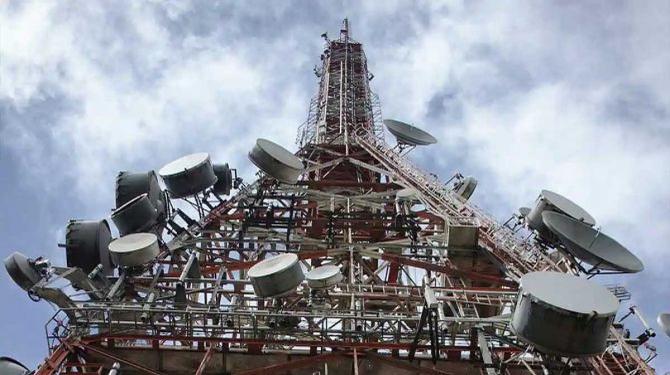Telecom infrastructure player Indus Towers has been largely ignored by investors with occasional bursts of trading when there’s news flow.

For example, the stock fell from Rs 188 (Jan 1, 2023) to Rs 135 (Jan 27) and then bounced back to Rs 165 in early February as the Government of India (GoI) converted Vodafone Idea’s (Vi) debt into equity and Bharti Airtel pushed up its direct stake in Indus to 47.95 per cent.
The cash-strapped Vi holds 21 per cent stake in Indus Towers and Indus also has substantial receivables to come in from Vi which is a negative overhang.
The GoI action in rescuing Vi has led to hopes that the company would find the wherewithal to clear some dues.
Analysts have steadily downgraded the company valuations.
Indus Towers reported a sequentially weak performance for the third quarter of the 2022-23 financial year (Q3FY23).
It reported a decline in revenue of 15.1 per cent quarter-on-quarter (QoQ), as Q2FY23 revenue also included Rs 1,100 crore of deferred revenue.
There was also a big sequential decline in Ebitda (earnings before interest, tax, depreciation and amortisation) margin (down 1,777 basis points or bps QoQ) and a large provision for doubtful debts.
Adjusted revenue (excluding deferred revenue of Q2FY23) declined by 1.5 per cent QoQ to Rs 6,765 crore and the Ebitda margin dropped to 17.5 per cent from around 35 per cent in Q2FY23, due to higher other expenses, including the provision for doubtful debts of Rs 2,270 crore.
This new provision is in addition to an earlier Rs 1,770 crore debt provision created in Q2FY23.
On the operational side, the total number of towers grew by 0.8 per cent QoQ to 189,392 and total colocations grew by 0.4 per cent QoQ to 339,435.
The capex for Q3 was at Rs 1,037 crore vs Rs 794 crore for Q2FY23.
Net debt (with lease liabilities) decreased to Rs 19,470 crore from Rs 19,980 crore in Q2FY23.
The bottomlline was a loss of Rs 708 crore for Q3, versus Rs 871 crore profit after tax (PAT) for Q2.
However, PAT (normalised by excluding provisions) grew 4.4 per cent YoY and 3.3 per cent QoQ.
Although reforms are expected to drive tower and colocation addition, and 5G rollout would drive the addition of small cells, the financials remain a question mark in the medium term.
Revenue CAGR (compound annual growth rate) could be quite low at 2 per cent with an average Ebit (earnings before interest and tax) margin of 22 per cent.
The salient Q3 management guidance was as follows: Around 50,000 5G Base Transceiver Stations (BTS) have been installed by Indian telecom operators so far.
Currently, 5G BTS are being installed at the rate of 5,000 per week with projections that India will hit 500 million 5G subscription by 2028, with average data usage expected to go to 40-50 GB per month from the current 20GB.
But core revenue from rentals is down 5.5 per cent YoY due to discount on renewals and optimisation of locations.
Management is in “active talks” to resolve the receivables issue.
Positive news flow going forward would be clearing of the receivables, which would immediately add back to the bottomline.
However conservative analysts have cut Ebitda projections for FY23 and FY24 to factor in the provision for bad debt.
A stake sale by Vi is also a possibility.
Discounted cash flow valuations estimates are between Rs 170 and Rs 190 from various analysts.
The lower estimates assume telecom services will reduce to a duopoly.
There are risks due to the weak growth and high capex demands, apart from Vi-related issues.
Are all the risks already built into the price at current levels of Rs 167?
The contrarians and optimists would hope so.











